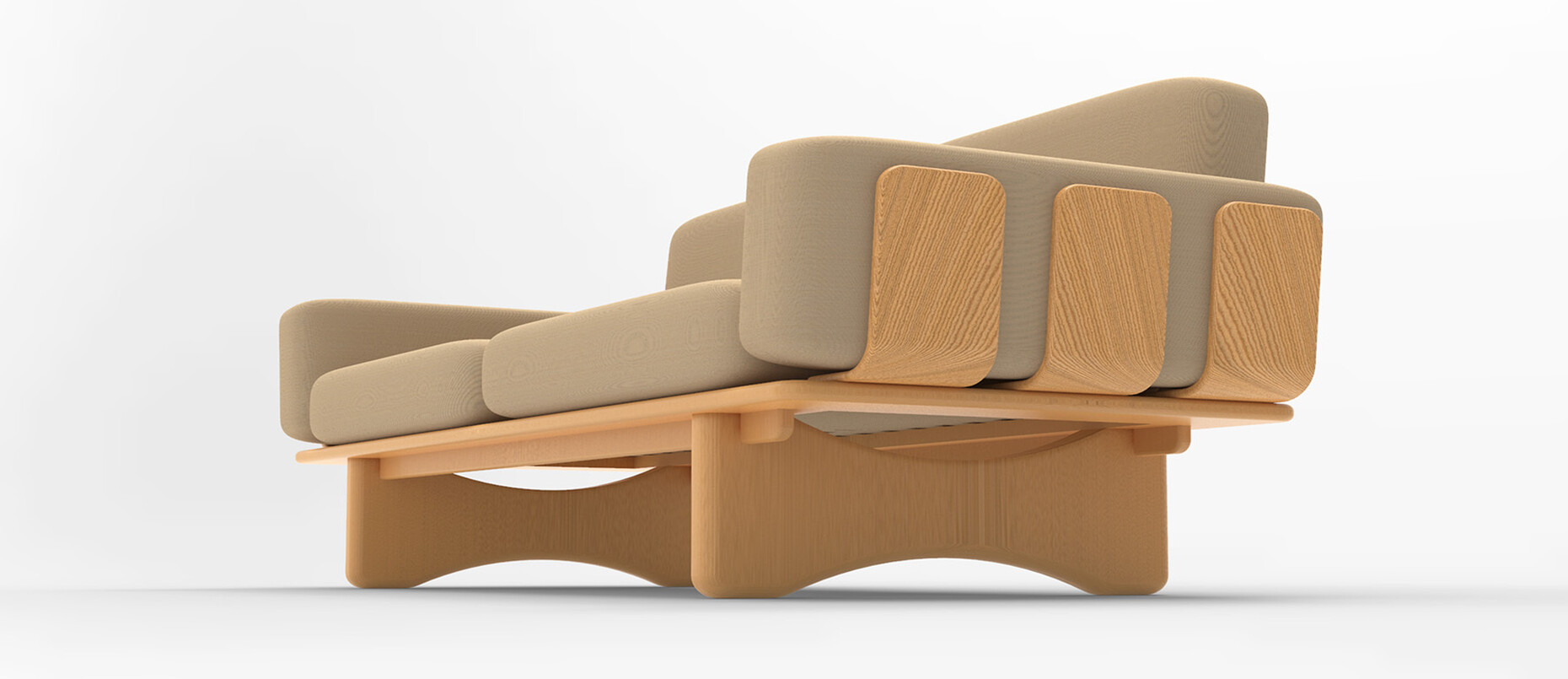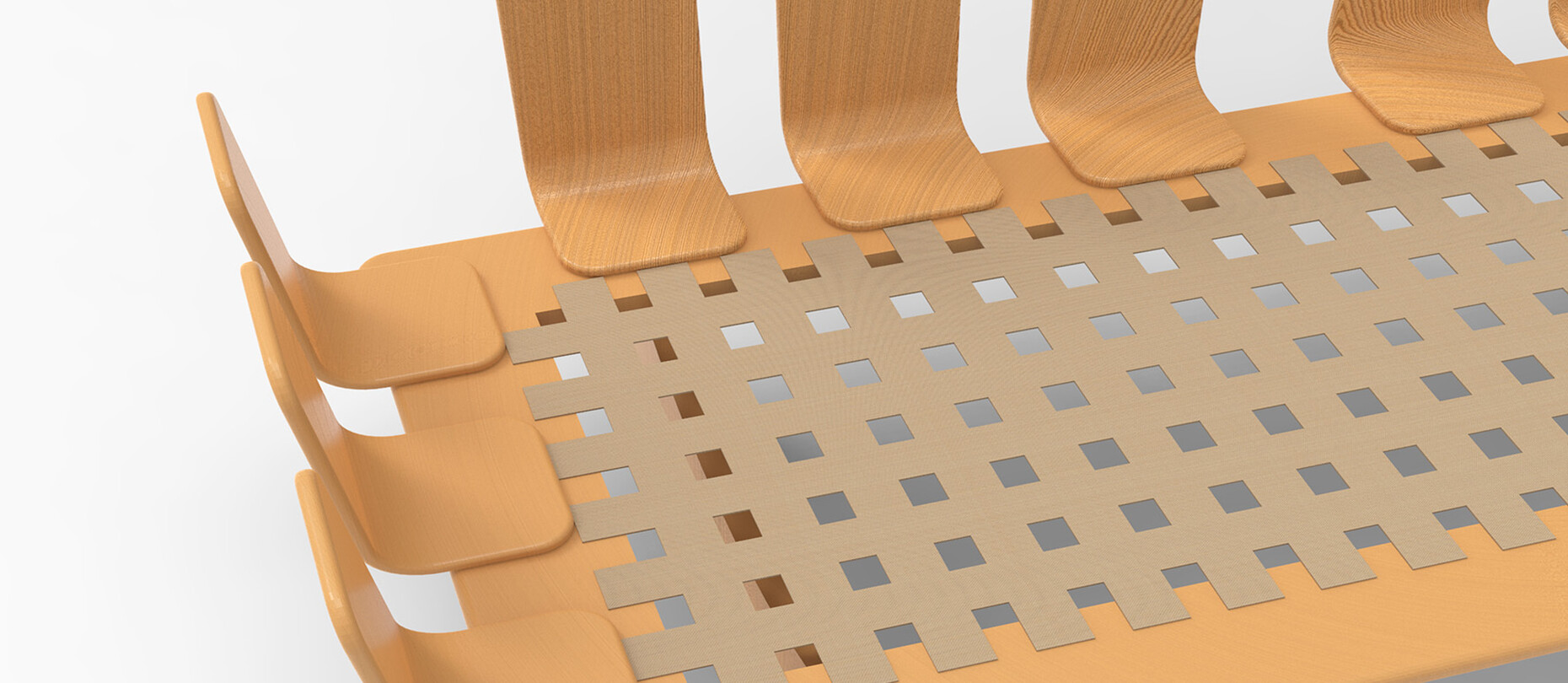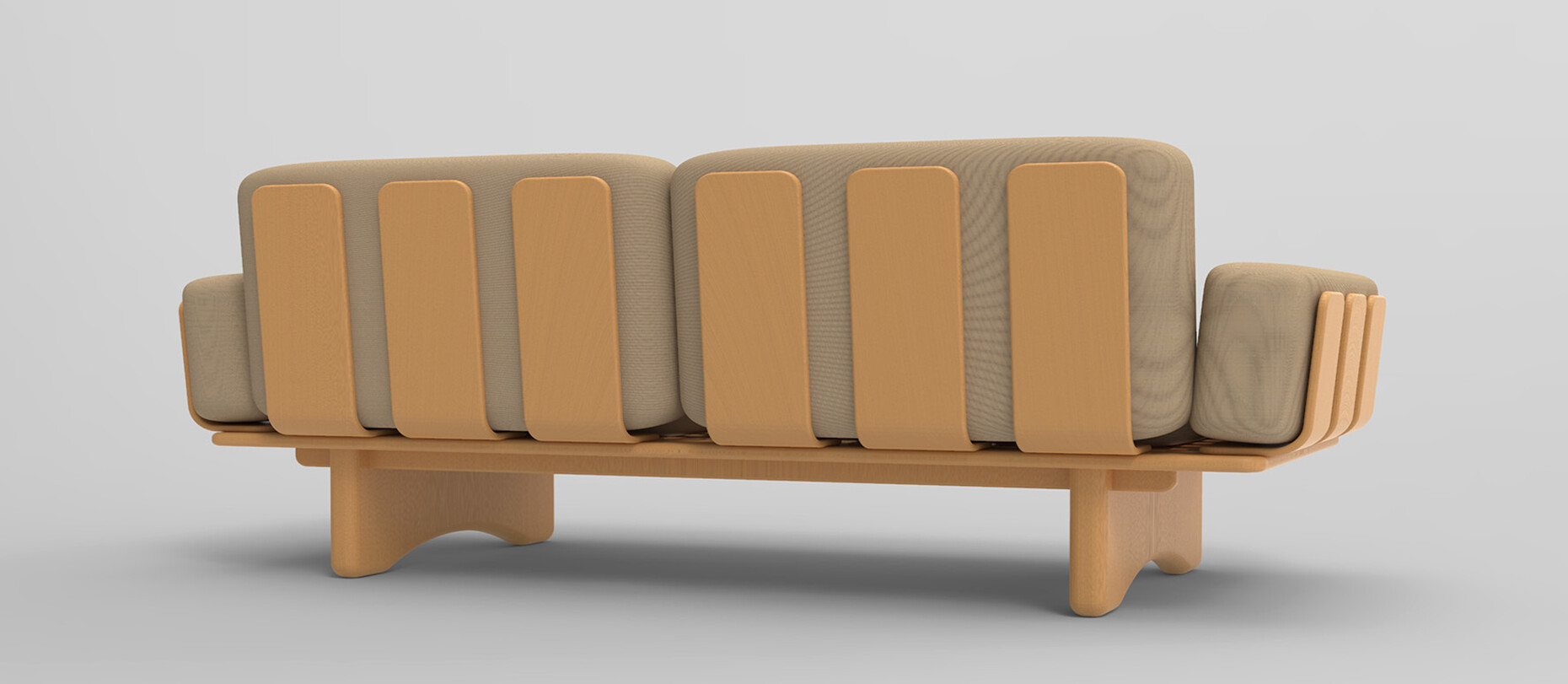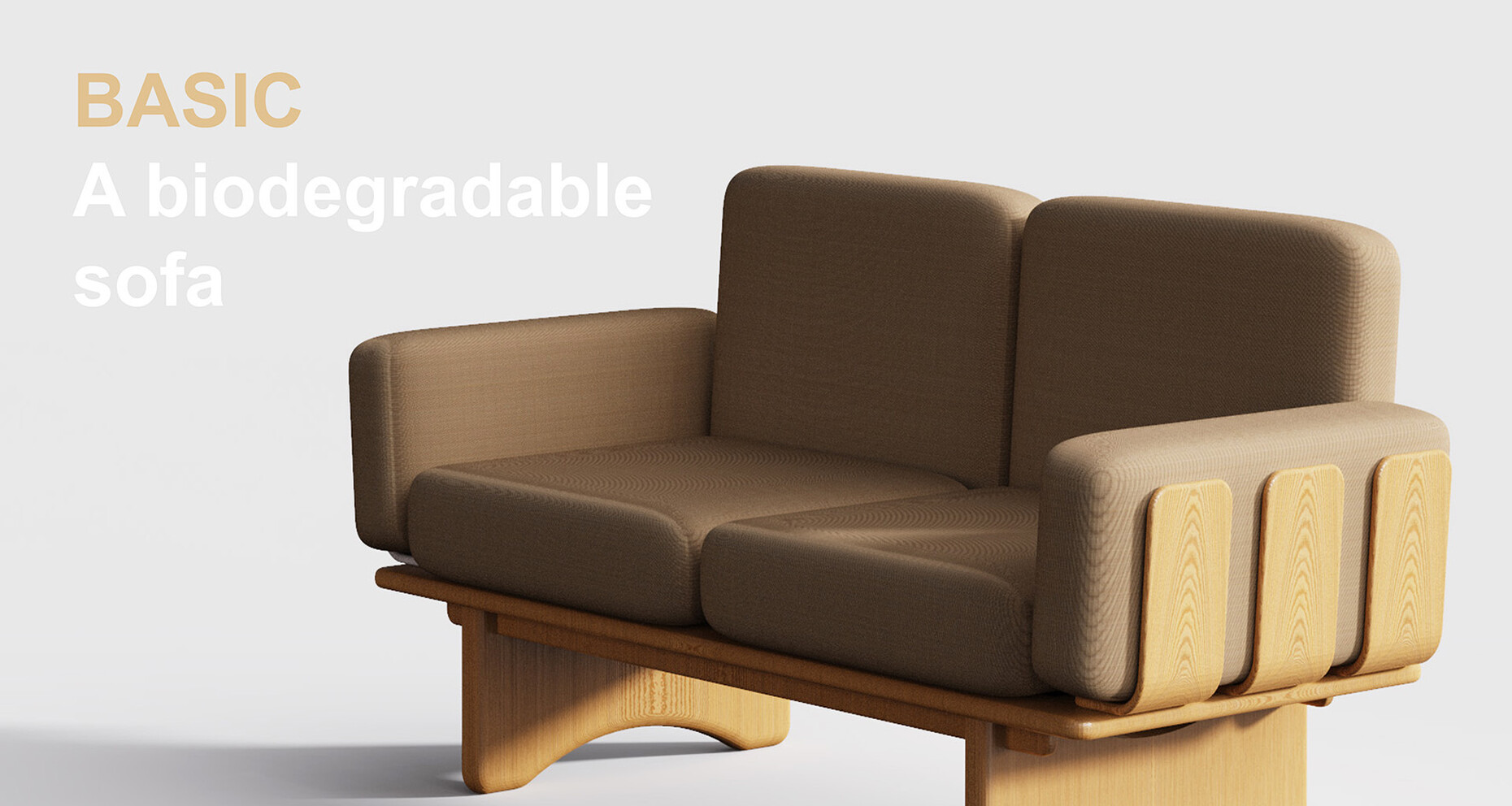YOUNG TALENTS
Re-thinking Foam
Can you imagine everyday life without soft furniture, without the comfort of a mattress at night or cosy sofa cushions after a long day? Yet, this comfort can pose a serious environmental problem due to the foam it contains. Kim Lund, a design student at the Oslo School of Architecture and Design, got involved on how furniture is made and what materials it contains at the renowned furniture design studio Anderssen&Voll. Nowadays, most soft furniture is produced with petroleum-based foam, the manufacturing process of which is problematic and which cannot be recycled but can only be reprocessed with a loss of quality. "Worldwide, furniture foams are responsible for 105 million tonnes of CO₂ emissions per year. An armchair, for example, emits an average of 43 kilogramm of CO₂, and almost half of this is caused by the furniture foam." He also found no current alternatives to the unsustainable, petroleum-based material.
Lund was not satisfied with that. "As a designer, you have a responsibility. When we design new products that go into production, we have to ask ourselves whether there really is a need for another product and, if so, whether it can be designed and produced sustainably." As part of his final project, he set out to find an environmentally friendly alternative to synthetic foam and created a modern concept of what a sustainable sofa could look like today by conducting a comprehensive material and design study.
He tested nine different plant fibres in comparison to the six synthetic, petroleum-based foams that are most commonly used in sofas today and compared the durability, sensory impression and seating comfort of all materials. For a final blind test, he built three fully functional prototypes of the cushions – filled with hemp fibres, hemp fibres and wood wool as well as synthetic foam. Of the plant-based fillings, the hemp fibre provided the best result, but the synthetic foam still offered the best comfort. However, when the test subjects knew which pillows were synthetic and which were organic, they always opted for the hemp fibre, even if it offered slightly less comfort. "This gives me hope and motivation to continue researching the material. The next step would be to try to make an organic latex from hemp, which would hopefully offer exactly the same comfort as synthetic foam."
Satisfied with the findings from the material study, Lund set about designing the sofa. For him, good design is light and consists of only a few components that allow for flat transport and facilitate production and assembly. The final design for his sustainably produced yet durable BASIC sofa fulfils all his requirements and offers a high level of comfort. It is component-based, petroleum-free and made exclusively from organic, biodegradable materials: The frame is made of wood and hemp straps, while the cushions are made of linen fabric with a filling of hemp fibres. "At the end of its life, you can throw the sofa into your garden, where it will decompose and become fertiliser for your plants. But a sofa made from high-quality materials can last for many years, decades even."
The BASIC sofa is not in production. Kim sees his project as a conceptual statement to inspire future trends. His design and material research into replacing synthetic foam is a starting point for further investigation. As the industry is aware of the problems with synthetic, petroleum-based foam, Lund believes that many manufacturers and design studios will use sustainable alternatives as soon as there is a feasible option.
In his designs, Kim Lund explores different materials and methods, such as large-scale 3D printing for his project "Closeness". As a designer, he still feels limited by this technology. Currently, Lund is increasingly turning to art and enjoying the creative freedom. "Art allows me to contemplate and find peace. Design must always have an intelligent function or feature that makes it interesting. But I'm also interested in joints, like the meeting of two materials, and how my knowledge of design influences my art." Lund is convinced that an object can be art and design at the same time – like a chair that is functional and can also be transformed into a sculpture in the home.








